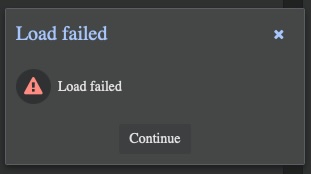Wait, What Is the Proxmox Datacenter Manager Actually Doing?

It’s been over six months since the initial release of the Proxmox Datacenter Manager (PDM), and let’s be honest: the expectations were high. A modern, centralized management layer for multiple Proxmox clusters? On the paper, it sounded like exactly what the community needed. But fast forward to today we’re still looking at an alpha version (v. 0.1.11) which’s riddled with bugs, plagued by missing features, and generally feels… unfinished. When being released by the end of last year, I already happily wrote about it and my expectations were high but…
To be fair, it’s not uncommon for early software to need time to mature. But six months in, the pace of progress has been underwhelming. Community feedback is trickling in, but so are frustrations. Promises of streamlined cluster management and unified visibility haven’t quite materialized the way many had hoped – just like me and my customers.
So, what is PDM really offering today? What’s working, what’s not, and is there any light at the end of this tunnel?
What is the Proxmox Datacenter Manager?
The Proxmox Datacenter Manager (PDM) is Proxmox’s attempt to centralize the management of multiple Proxmox VE clusters into a single web interface. The idea is simple: instead of logging into each cluster separately, you connect them all to one central dashboard. From there, you’re supposed to be able to view and manage nodes, virtual machines, storage, and other resources across your entire infrastructure.
In its current state, PDM offers a unified inventory overview, some basic node and VM details, and the ability to register clusters using API credentials. It also introduces a modern UI based on the latest web technologies, separate from the traditional Proxmox VE interface.
But here’s the catch: many of the core features are still missing or incomplete. You can’t (yet) manage VMs or containers directly from PDM, and there’s limited support for actions like migrations, storage handling, or user permissions. Essentially, it functions more as a read-only dashboard than a true management layer – for now. And this is also how it works, the Proxmox Datacenter Manager is more or less just an API client for the PVE nodes and consumes the given data by the API.
In theory, PDM is a promising step toward simplifying multi-cluster operations. In practice, it still feels like a rough proof of concept in need of significant development.
Features & Fixes over the Time

The Proxmox Datacenter Manager (PDM) has a long list of planned features where some of them genuinely look exciting. At the top are improvements that could really enhance multi-cluster visibility and control: health status across nodes, centralized backup and update monitoring, smarter VM organization using groups or tags, and even SDN support for EVPN across clusters. There’s also the talk of simplified remote joining, configuration management, firewall integration, and high-level actions like remote migrations or bulk operations. And talking about the scripted chaos of remote joining and cluster creation, I already solved this by bringing the new Ansible module proxmox_cluster to upstream.
Notably, the SDN/EVPN vision sounds pretty interesting. Stretching virtual networks across clusters with VRFs and automatic routing config could bring true multi-site elegance to Proxmox setups which we’re missing currently or need to build on our own by L2 VPNs. Similarly, core management features like node updates and backup monitoring are long overdue and highly requested by users of larger environments and also a reason why I’m currently working to integrate an automated patch management into ProxLB.
But here’s the catch: much of this still lives in the ‘idea space’. It reads less like a roadmap and more like a feature wish list where some partially implemented, others still vaguely defined. Many items sound great on paper, but in reality, it’s not really clear what’c actively in progress versus just being explored. And given how slow things have moved in the last six months, it’s fair to say the momentum is… questionable.
Some tasks, like patch management or remote backup monitoring, are already being tackled more effectively by third-party tools. That makes PDM’s current role even more ambiguous: is it trying to reinvent existing tooling or just catch up? While other third-party tools like the Cluster Manager (developed by xdoomer01) or CV4PVE already had similar features, the real interesting features are still missing. To be fair, there’s a catch – the remote migration task where you can migrate a guest from one cluster directly to another one where it even offers you to choose the target storage. Recently, even a bigger show stopper with Ceph storage regarding the migrations got fixed. This is indeed already pretty useful – even it’s just a one liner on the CLI. Beside this, everything looks more like read-only operations and links to other resources – sure placeholders which can be adjusted at a later time and may also provide real features to operate with – but until now not much happened here. Also when it comes to bug fixing we can see some patches coming but several bigger bugs are still present.
At this point, it’s still hard to say where PDM is truly headed or how soon it’ll get there. To be fair, the Proxmox Datacenter Manager (PDM) is part of a free and open-source ecosystem, even if it’s backed by a commercial company. That means that development resources are not unlimited, and priorities have to be carefully weighed. We also need to acknowledge that we, as external observers, don’t know everything going on behind the scenes. It’s likely that much of the Proxmox team is currently going into preparing the upcoming Proxmox 9 release, which is expected in the near future. This being said, this makes clear and transparent communication with the community even more important. Setting realistic expectations and sharing a bit more about what’s in progress would help maintain trust and engagement. The decision to position PDM as a multi-cluster management solution was a strong and important step but now it’s time to shape it into a tool that genuinely addresses the needs and workflows of its user base.
